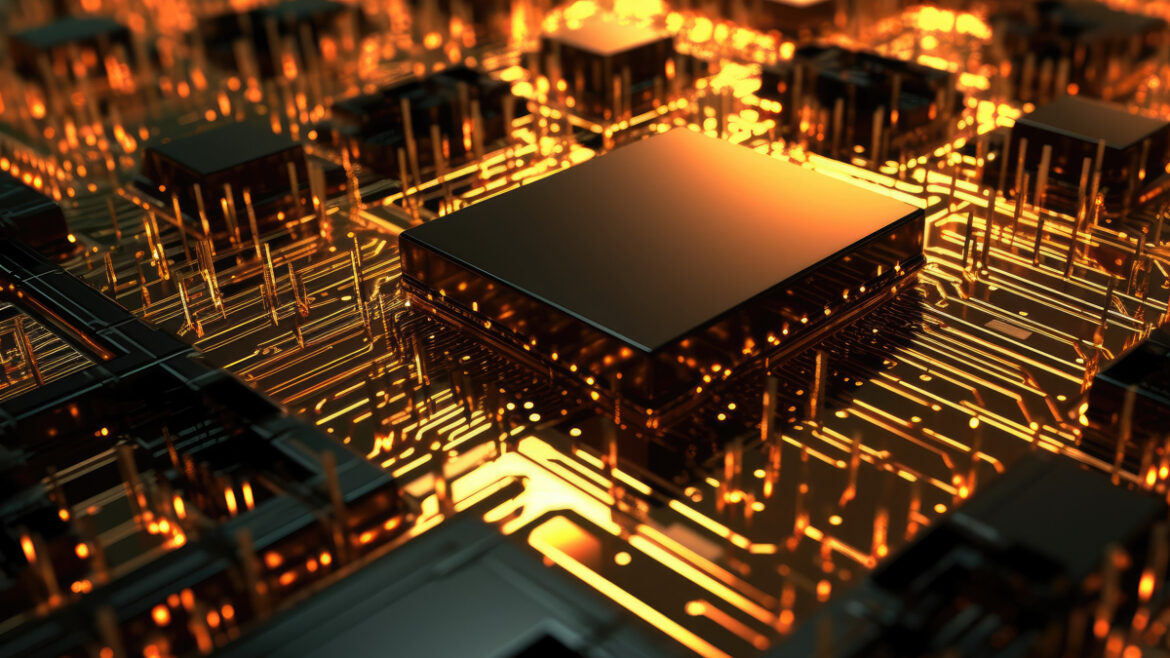Chips, data centers and engineers: All are evolving rapidly in the world of AI infrastructure

The economic and manufacturing challenges of creating monolithic chips is driving an evolution toward chiplet-based designs: small, functional blocks of silicon, each optimized for a specific task and combined within a single package to create a complete system-on-chip (SoC). Because less critical components can be built on mature, cost-efficient nodes, while cutting-edge processes can go to high-performance blocks, there are scalability and performance gains, as well as superior manufacturing yields, with less waste and cost. For these reasons, AMD, Intel, NVIDIA, AWS, Arm, and others are moving toward chiplet-based architectures, with expectations for other innovations, like multi-die packaging on the horizon.
Those efficiency boosts and cost savings are what hyperscalers, data center providers and engineering firms increasingly need with massive data centers and large-scale “AI gigafactories” in the works, like those now planned across Europe by The European Commission, the European Investment Bank, and the European Investment Fund. In a memorandum of understanding, all three entities agreed to strengthening collaboration and financing for projects aimed at making Europe “a leading AI continent.” Plans include three to five high-performance computing hubs across the continent, each of which will host roughly 100,000 AI chips to train the latest and most complex models. The facilities will be funded through InvestAI, a €200 billion ($209 billion USD) investment framework that includes a €20 billion fund ($23.32 billion USD) specifically dedicated to the gigafactory initiative.
As massive data centers and gigafactories are constructed for the sake of AI, Editor Sean Kinney of RCR Wireless asked Rob Knoth, an engineer and senior group director of strategy and new ventures for Cadence, is AI helping or hurting those who engineer and build the actual facilities? Knoth said: “When I talk about that affliction of being an engineer or a designer, what it really comes down to is that intuition, that imagination. It’s that grounding in a very solid understanding of [computer science] and math, of really understanding those fundamentals. When you couple that with intuition and with imagination, that’s the spark. That’s the beauty.” He acknowledged engineers’ roles continue to shift toward integrated, strategic, and tech-driven oversight, with mastery in skills like automation, sustainable design, and digital modeling. He emphasized engineers will continue to embrace change and automation, even when things aren’t quite as “pretty, or quite as good” as they’d be with a human doing them. There’s an acceptance that “if the computer, the software, the tool can do something that meets the requirements that you’re measuring, and it can do it in a semi-automated fashion, you learn to trust it.”

Susana Schwartz
Technology Editor
RCRTech
AI Infrastructure Top Stories
Commitment to large-scale data centers in Europe: The European Commission, the European Investment Bank (EIB), and the European Investment Fund (EIF) have agreed to accelerate the rollout of large-scale “AI gigafactory” data centers that will make Europe “a leading AI continent.“
Impact of AI on engineers: Rob Knoth, senior group director of strategy and new ventures for Cadence Design Systems, talked to RCR Wireless’ Sean Kinney during NVIDIA’s GTC DC event about the impact of rapid AI advancements on engineers, and how AI is changing what they do day-to-day.
Good things come in small packages: Chiplets are increasingly powering next-gen AI chips, with AMD’s EPYC and Instinct lines, Intel’s Meteor Lake and Arrow Lake CPUs, and NVIDIA’s latest GPUs expected to adopt multi-die packaging for greater flexibility and performance.

AI-Powered Telecom Infrastructure
Supermicro, in collaboration with NVIDIA, delivers AI-powered infrastructure tailored for telcos, enhancing operational efficiency, network management, and customer experiences. Explore now
AI Today: What You Need to Know
AI Inference: Fireworks AI raised $250 million in its latest funding round with Lightspeed Venture Partners, Index Ventures and Evantic, and Sequoia Capital. The series C round highlights the evolution from primarily training and building AI models to actually operating them through everyday usage.
Nokia-Nvidia AI-native 5G and 6G: Nvidia took a $1 billion stake in Nokia, sending the 5G equipment maker’s shares up 26%. Nokia said it would adapt its 5G and 6G software to run on Nvidia’s chips, and that it would consider incorporating Nvidia technology into its future AI infrastructure plans.
Considering the oil majors in AI: Illuminem has explored “Why big oil is missing out on the AI energy bonanza:” One, data centers’ energy surge is concentrated in electricity grids (largely powered by renewables, nuclear and gas); two, oil majors have aggressively increased output, creating a risk of oversupply as global energy consumption shifts.
Building AI gigafactories in Europe: Nvidia and Deutsche Telekom have joined forces to launch a €1 billion (1.166 USD) data center in Munich, Germany, marking one of Europe’s most ambitious tech infrastructure projects. SAP has already lined up as a major customer, and Deutsche is engaged in discussions with other firms about building additional AI gigafactories.
Amazon layoff: Amazon will cut about 14,000 corporate jobs as the online retail giant ramps up spending on AI, while cutting costs elsewhere. In June, CEO Andy Jassy noted generative AI would reduce Amazon’s workforce. At the time, there were approx. 1,000 generative AI services and applications in progress or built.
Lumen-QTS DC partnership: Lumen will connect its AI-ready infrastructure to16 new QTS data center campuses across the U.S., including in Arizona, Georgia, Ohio, Texas, Virginia, and Oregon. The collaboration also brings QTS’s AI-optimized data center footprint on-net to Lumen’s 340,000-route-mile global fiber backbone.
Vertiv’s new office in U.S. capital: Vertiv launched a new government relations office in Washington, D.C. to strengthen its engagement with policymakers and its role in delivering AI-ready infrastructure that aligns with the U.S. AI Action Plan and American AI Exports Program.
Upcoming Events
Industry Resources
- An offer they can’t refuse?
- California passes landmark AI laws, which undergo new scrutiny in OpenAI-Encode Dispute
- New report examines ‘Wild West’ environment of edge computing and 5-Pillar infrastructure to mitigate the challenges
- Your AI infrastructure is as good as your DNS strategy, and the resiliency of both cloud and network infrastructure


